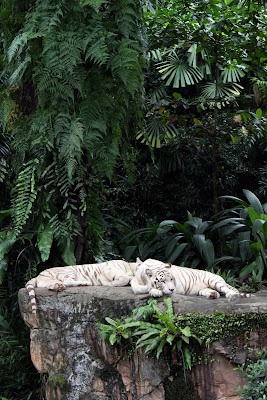 |
| Elephants remain the preferred choice for moving logs in rough terrain. © Lee Kee An |
Hello dear friends and fellow photographers!
My name is Duc and I am proud to present you the ACJC Photographic Society’s latest project, which we embarked on in collaboration with the Singapore Zoological Gardens. Let me also take this opportunity to share with you a little bit about its conception.
In June 2010, I read through an O-level comprehension passage entitled “The Shutter and the Trigger” by Billy Arjan Singh. The author was originally a tiger hunter who became a photographer after he realized that hunting only destroyed wildlife and nature but photography captured memories of the animals and their unique expressions forever.
Photography can give photographers themselves the sheer joy of getting close to nature and capturing its soul - a privilege indeed. This made me decide that wildlife photography would be something our CCA would benefit from, because it would be both enjoyable as an outing and enriching as a skill-improving activity.
Furthermore, Singapore is blessed with having such a world-famous zoo. I especially like the concept of an open zoo because it allows photographs to be taken without being obstructed by bars and wires (as with a number of conventional zoos). However, it is the animals that relish this open space more than anyone else. I believe this enables photographers to capture that sense of freedom, even though they are living in captivity.
Our photographs certainly cannot compare to those taken by professional wildlife photographers, but nonetheless, we hope that Project Zoo will appeal to you. We aspire to take advantage of our youth to better reach out to those in our age group.
Here in Project Zoo, you will find that aspiration portrayed in beautiful and often sentimental photographs by members of the ACJC Photographic Society. It is my hope that you will enjoy our work and musings as much as we enjoyed making them.
Lastly, on behalf of the project team, I would like to thank Mr. Yap Wai Kit, Research and Conservation Officer with the Singapore Zoo, for continuously advising us and giving us tips on animal photography.
Pham Quang Duc
Chief Photographer




